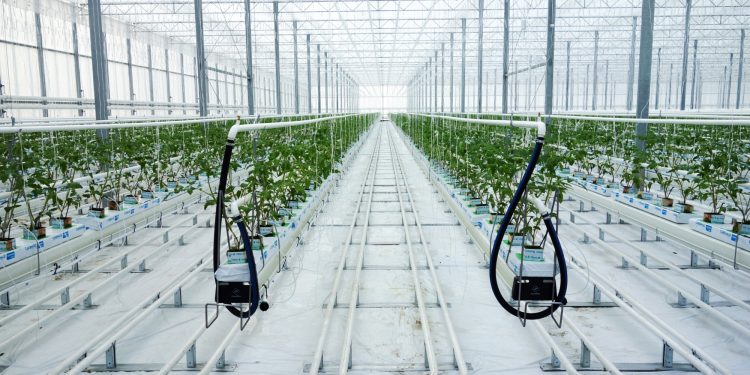#Greenhouse #IrrigationSystems #Clogging #Agriculture #PlantGrowth #Production #WaterQuality #SystemMaintenance
For growers and agricultural professionals, maintaining an efficient and effective irrigation system is crucial for healthy plant growth and optimal production. However, clogging can present a common problem that can negatively impact the system’s function and output. In this article, we’ll explore the three types of clogging that can occur in greenhouse irrigation systems and provide viable solutions to manage them.
According to Rosa E. Raudales, an assistant professor of horticulture and a greenhouse extension specialist at the University of Connecticut, growers should be aware of three types of clogging: physical, biological, and chemical. Physical clogging involves solid particles blocking the irrigation system, which can happen when recirculating water or using pond water as the water source. On the other hand, biological clogging occurs when biofilm, commonly known as lime, builds up in pipes and slows or stops water flow. This type of clogging is identifiable by the greenish-brown color of the biofilm.
Chemical clogging, the third type, occurs when minerals and chemicals in the water interact and form deposits that can accumulate and obstruct the irrigation system. Growers can identify this type of clogging by inspecting the irrigation system’s filter for deposits.
To prevent clogging, growers can implement various strategies, including monitoring water quality, regular system flushing, and using appropriate filters. Additionally, choosing the right water source, using clean water, and properly maintaining the irrigation system can go a long way in preventing clogging.
Understanding the different types of clogging in greenhouse irrigation systems is essential for growers and agricultural professionals to maintain optimal plant growth and production. By identifying the specific cause and implementing proper prevention and maintenance measures, growers can effectively manage and prevent clogging in their irrigation systems.
There are three types of clogging: physical, biological, and chemical, each with its own unique challenges. While physical clogging is the easiest to deal with, biological and chemical clogging require a more significant effort to combat. To prevent clogs from occurring, growers should be aware of the different symptoms of clogging and take proactive measures to avoid them. This includes testing the water supply, ongoing low-dose chemical treatments, and installing water filtration systems.
According to Rosa Raudales, assistant professor and extension specialist in greenhouse and nursery engineering at the University of Connecticut, physical clogging is the easiest type of clogging to treat. This involves blowing out the material clogging the pipe using pressure, which can be a simple fix for growers. However, biological clogging caused by bacteria and algae, and chemical clogging caused by materials like iron, calcium, and manganese building up in the system, are more challenging to deal with.
For biological clogging, growers have a few treatment strategies to choose from, such as replacing clogged emitters with clean ones and washing the clogged ones. Chemical treatments are also an option, but bacteria can develop resistance to them over time. Chemical clogging requires using a large concentration of the chemical and shutting down the line, which can be done with an empty greenhouse.
To combat clogging effectively, growers should be aware of the different symptoms of clogging, such as wilted plants, residue in the piping, and dry plants. Testing the greenhouse’s water supply, ongoing low-dose chemical treatments, and installing a water filtration system can all help prevent clogs from occurring.
Preventing irrigation system clogs requires a proactive approach and awareness of the different types of clogging and their unique challenges. By implementing best practices like ongoing low-dose chemical treatments and installing water filtration systems, growers can prevent clogs from occurring and avoid the labor-intensive process of unclogging irrigation systems.










